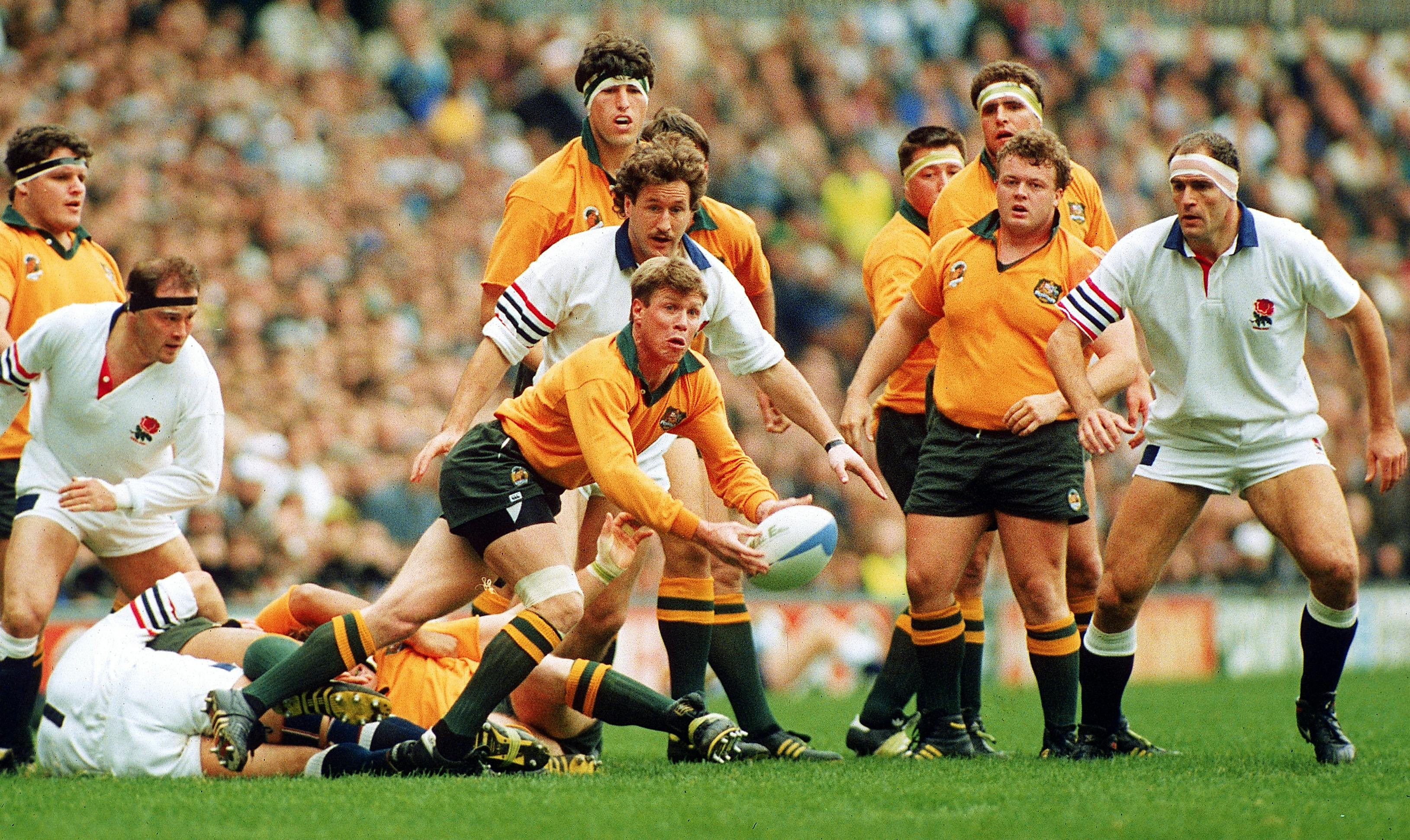Nicholas Campbell Farr-Jones
- 63Age
- 63Caps
- 645Wallaby Number
Biography
Nick Farr-Jones was without doubt one of, if not the, greatest Wallaby captain of all-time. While he may not have had the sidestep of a Cyril Burke or the marvellous cover defence of John Hipwell and perhaps lacked the elegance of a Des Connor or the inspired running of a Ken Catchpole his all-round attributes were more than perfect for the modern game. As such he was arguably Australia’s most complete and accomplished halfback.
A highly respected and inspiring leader, tireless defender and devastating runner on the short side Farr-Jones had a seemingly innate ability to read the play a couple of phases ahead of time. He was also inexorably consistent. Mark Ella said that he believed Farr-Jones was worth 10 points every time he played for Australia. Born in Sydney’s Sutherland Shire, Farr-Jones attended Newington College where he did not play in the school’s 1st XV, much like fellow future Wallaby captain Phil Kearns, and from there studied Law at the University of Sydney.
In 1984 the University played in Sydney’s 2nd Division competition and the near-term outlook for Farr-Jones from a rugby perspective looked rather bleak. However, the eagle-eyed Sydney selectors of that time liked what they saw and picked him for a tour to Europe where he debuted against a Zebre Invitation XV in Brescia, Italy. His fairytale year remained just that when he was first selected on the Wallaby tour to Fiji as the backup scrum half to Phillip Cox, and then on the Eighth Wallabies tour of the U.K. and Ireland. What became obvious to those that saw him play on that tour was that Farr-Jones at halfback was tantamount to having a third breakaway due to his size and strength.
He seized upon an early opportunity to impress as Cox nursed an injured shoulder and his good form earned him a Test debut against England at Twickenham. Farr-Jones went on to become an invaluable and nigh irreplaceable member of the Australian team. From his debut until the third Test of the 1993 series against South Africa Farr-Jones played in 63 of the Wallabies’ 70 Tests. He won the Bledisloe Cup, on New Zealand soil no less, in 1986; he was appointed captain in 1988 and led Australia in a then record 36 Tests; he was selected to two Rugby World Cups, and as the winning captain, returned home from the 1991 tournament a World Champion; and in 1992 he captained the Wallabies on their first tour of South Africa in 23 years.
In the sole Test of that tour Australia handed the Springboks their heaviest defeat in a century. That same year Farr-Jones became a Member of the Order of Australia in recognition of “service to the sport of Rugby Union football”. In 2008 he was inducted into the Wallaby Hall of Fame and three years later was named into the World Rugby Hall of Fame. Nick Farr-Jones played 63 Tests for Australia in a highly decorated 10-year international career.
Highlights
1984
Farr-Jones won his first Test cap as the starting halfback in the 19-3 victory over England at Twickenham. He retained the No.9 jersey for the three remaining ‘Grand Slam’ internationals against Ireland, Wales and Scotland. Farr-Jones scored his first Test try in the 37-12 win against the Scots at Murrayfield.
1985
He played in all five Wallaby Tests, the first three - Canada (2) and New Zealand - in partnership with Michael Lynagh and the final two against Fiji alongside David Knox.
1986
Farr-Jones and Lynagh lined up at No.9 and No.10 for all seven Tests of the 1986 season.
1987
Farr-Jones was capped in nine of Australia’s 12 Tests, eight as the starting No.9 although he was a late withdrawal against the U.S.A. due to an injured ankle. Brian Smith was elevated from the bench for the American Test while he also played halfback against Japan, Wales and in the 1st Test against Argentina. Farr-Jones was picked to attend his first Rugby World Cup where he started against England, Ireland and France. He also earned his one and only cap as a replacement in the tournament’s third place playoff against Wales in Rotorua. Represented Australia at the Hong Kong 7s.
1988
Farr-Jones captained the Wallabies in each of their eight Tests. He partnered Lynagh in six matches and Lloyd Walker in the final two Tests of the home series against New Zealand.
1989
He captained Australia in all six internationals, each of them in combination with Lynagh.
1990
Farr-Jones was capped as captain in all seven Wallaby Tests.
1991
Farr-Jones played in nine of the year’s 10 internationals. He was selected to his second Rugby World Cup, started five of Australia’s six matches but missed the pool game against Wales - where Lynagh captained - due to a knee injury. An aggravation of that same knee injury early in the quarter-final against Ireland forced him from the field however he recovered to lead the team to victory in both the semi-final over New Zealand and the final against England.
1992
Farr-Jones led Australia to a 2-0 series victory over Scotland, a 2-1 Bledisloe Cup win against New Zealand and the one-off defeat of South Africa in Cape Town before he formally retired.
1993
After Peter Slattery was kneed in the back against Tonga, Farr-Jones came out of retirement to play in the one-off Bledisloe Cup Test against New Zealand in Dunedin and in all three Tests of the home series against South Africa.
